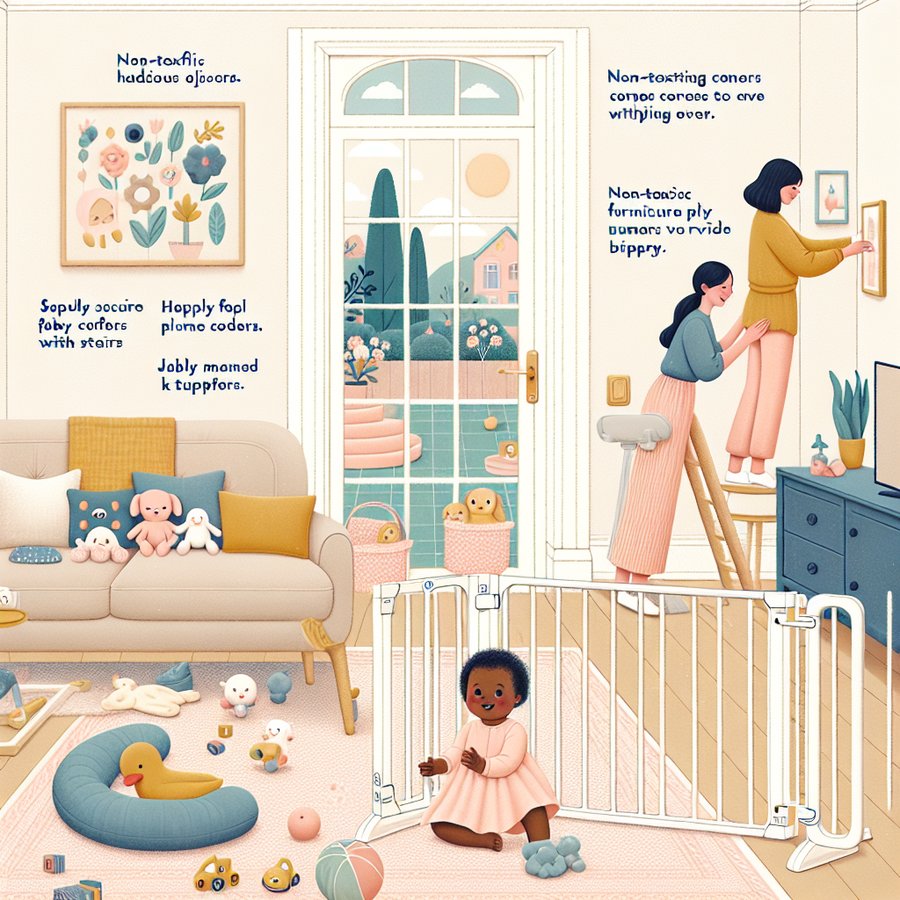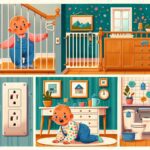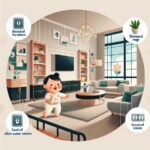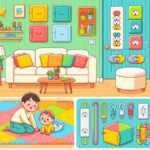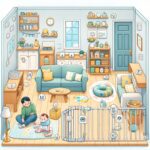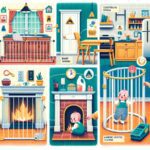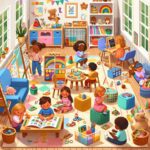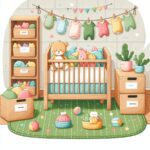Creating a baby-safe home environment is not just about baby-proofing; it’s about crafting a space where your little one can explore, learn, and grow safely. As a new parent, I quickly realized that my home was filled with potential hazards I had never considered before. From sharp corners to electrical outlets, everything seemed to pose a risk. This realization led me on a journey to transform my home into a sanctuary of safety for my baby, and I want to share that knowledge with you.
What is a Baby-Safe Home Environment?
A baby-safe home environment is one that minimizes risks of accidents and injuries for infants and toddlers. It involves adapting your living space to protect your child from common household hazards and ensuring that they can explore their surroundings without coming to harm. This includes securing furniture to prevent tipping, covering electrical outlets, and using baby gates to restrict access to dangerous areas.
But creating a baby-safe home goes beyond just physical modifications. It’s about being proactive and thinking one step ahead of your curious little explorer. Remember, babies and toddlers are naturally inquisitive and will want to touch, taste, and investigate everything in their path.
Why is Creating a Baby-Safe Home Environment Important?
The importance of creating a baby-safe home environment cannot be overstated. Each year, millions of children are injured in home accidents that could have been prevented with proper safety measures. These accidents can range from minor bumps and bruises to more serious injuries or even fatalities. By taking steps to secure your home, you’re not just protecting your child from immediate harm; you’re also fostering an environment where they can grow and develop safely.
Furthermore, a baby-safe home provides peace of mind for parents. Knowing that you’ve done everything in your power to protect your little one allows you to relax and enjoy the precious moments of parenthood. It’s about finding a balance between safety and freedom, allowing your child to explore their world in a controlled and secure manner.
How Can I Start Creating a Baby-Safe Home Environment?
Creating a baby-safe home environment begins with a thorough assessment of your living space. Walk through your home and try to see it from a baby’s perspective. What objects are within reach? What corners could be harmful? Are there any small items that could pose a choking hazard? This initial assessment will help you identify key areas that need attention.
After identifying potential hazards, it’s time to start baby-proofing. Secure heavy furniture to the walls to prevent tipping, install safety gates at the top and bottom of stairs, and use outlet covers to protect curious fingers. It’s also important to store household chemicals and medications out of reach, and to ensure that small objects that could pose choking hazards are secured away.
What Are Some Common Household Hazards?
When creating a baby-safe home environment, it’s crucial to be aware of common household hazards. These can include sharp corners on furniture, unsecured rugs that can cause slips and falls, and accessible cabinets that contain harmful products. Additionally, drowning hazards such as bathtubs, toilets, and buckets of water should never be left unattended while in use by your child.
Electrical hazards are also a significant concern. Exposed electrical outlets, loose wires, and small batteries can all pose risks to curious toddlers. It’s essential to use outlet covers, secure wires, and dispose of or store batteries safely. For more detailed guidance on securing your home against electrical hazards, [this article](https://babywhysandhows.com/how-to-baby-proof-your-home-effectively-against-electrical-hazards) offers excellent tips and strategies.
Creating a Baby-Safe Home Environment: What Are the Key Steps?
The key steps to creating a baby-safe home environment involve a combination of preparation, vigilance, and education. Start by securing heavy furniture and appliances to prevent tipping. Use corner guards on sharp edges, and install safety gates to restrict access to hazardous areas. Regularly check toys for wear and tear, and ensure that all baby products used in your home meet safety standards.
It’s also important to educate yourself and others in your home about baby safety. This includes understanding the risks of SIDS and practicing safe sleep guidelines. For more information on safe sleep practices, consider exploring [this resource](https://babywhysandhows.com/safe-sleep-practices-to-reduce-the-risk-of-sids). Additionally, being prepared for emergencies is crucial. Learning infant CPR and having a well-stocked first aid kit are key components of a baby-safe home. For a comprehensive guide on infant CPR, [click here](https://babywhysandhows.com/understanding-infant-cpr-a-lifesaving-guide-for-parents).

